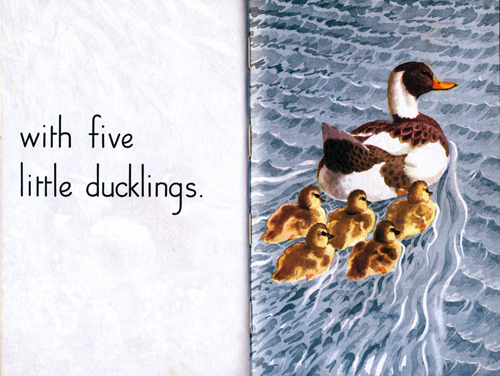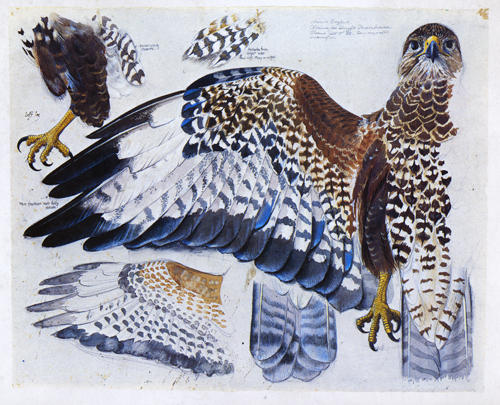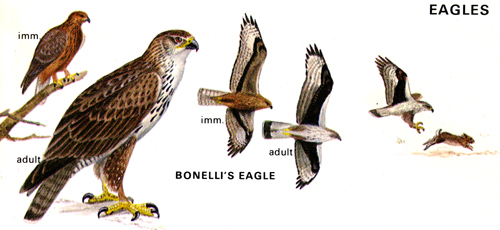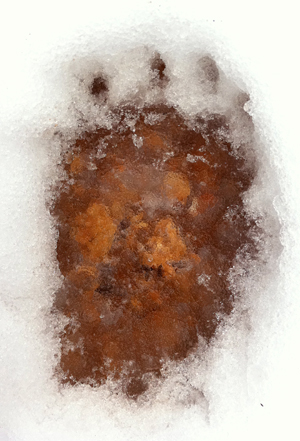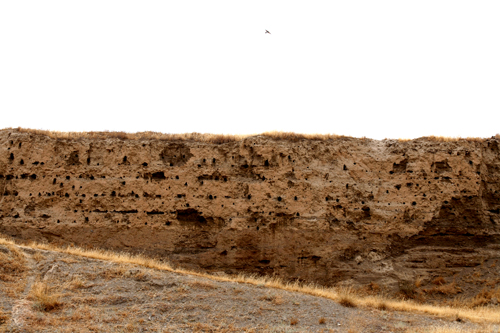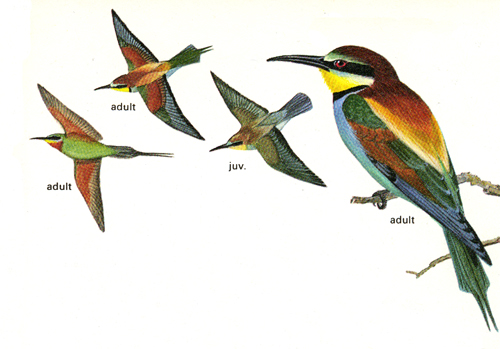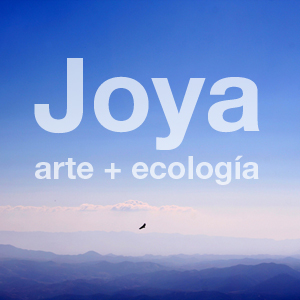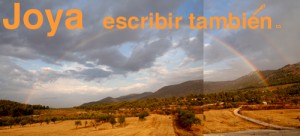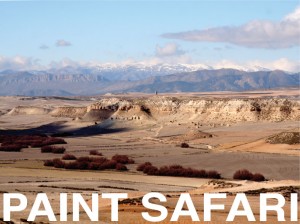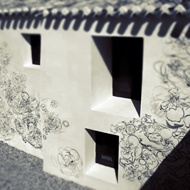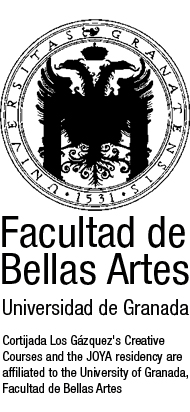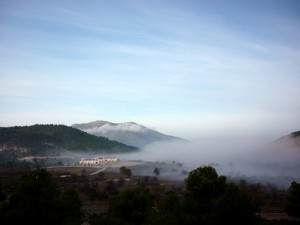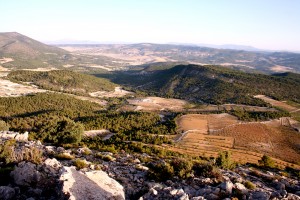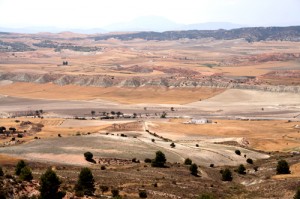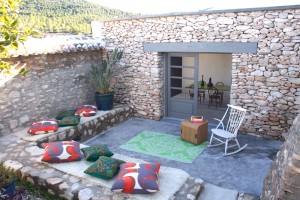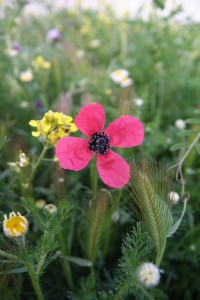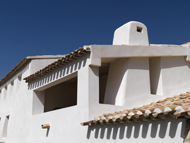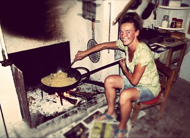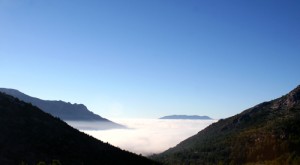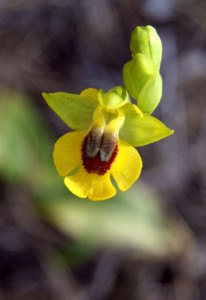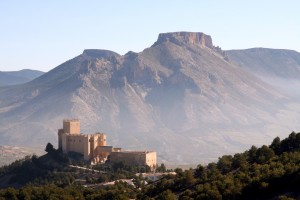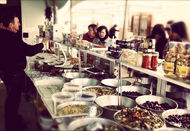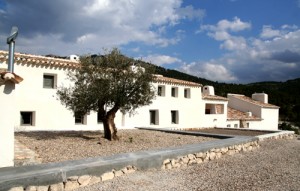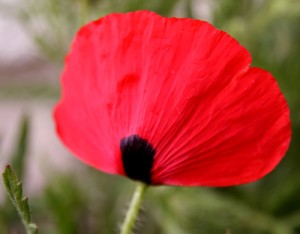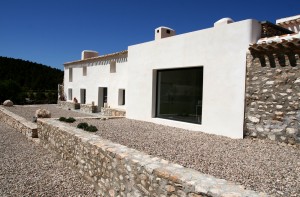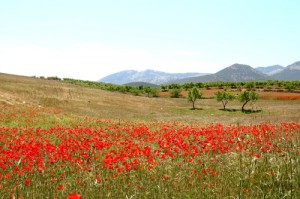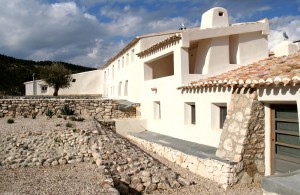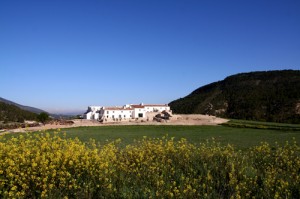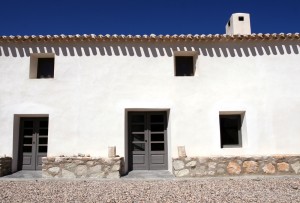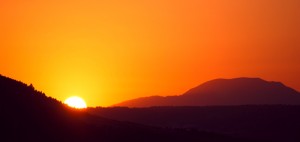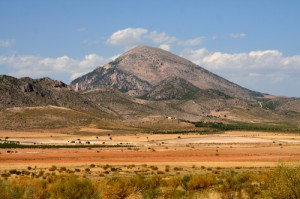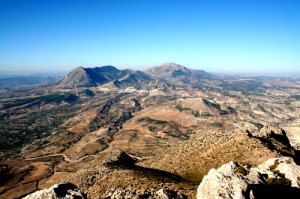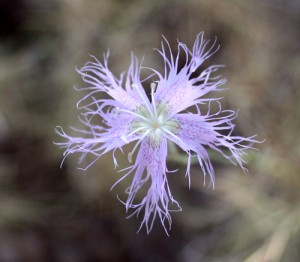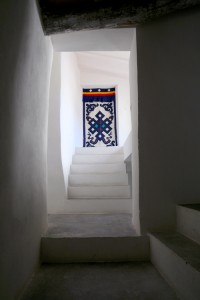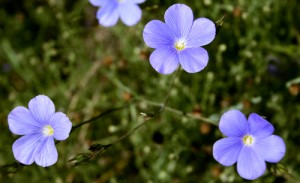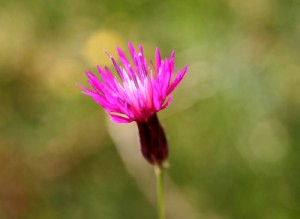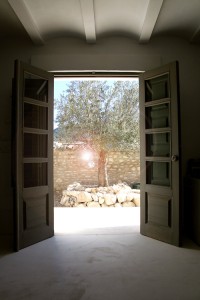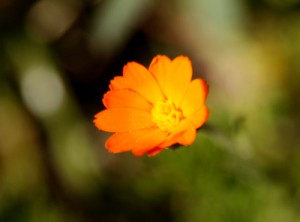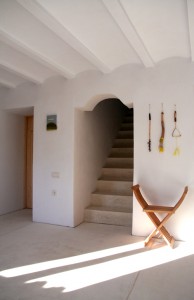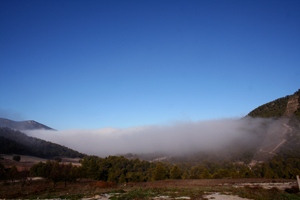Last Saturday was a wonderful and enlightening day for us here at Los Gázquez. We, along with others from the Andalucían Bird Society, were guests of our friend and colleague Jesús Contreras of OZ NATURE, wildlife guide and total enthusiast for all things natural and from Almería. If you are in these parts make sure you contact him as a guide if you should ever want deep insight to the natural world and the creatures that populate it in these desert lands.
The day started with a trip to our neighbours over the mountain at the ‘Las Almohallas Centro de Recuperación de Especies Amenzadas’, the centre for the recuperation of threatened species. This is where I found this wonderful Eagle Owl…
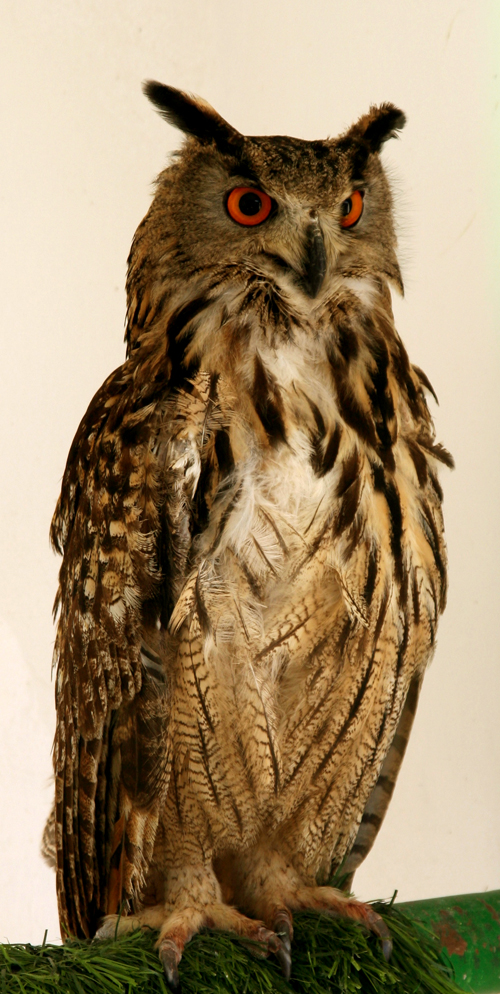
Sadly he/she will never return to the wild as it’s wings were damaged by power lines.
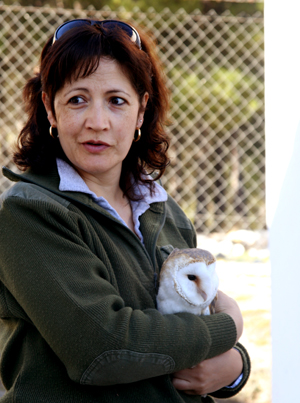 This is the director of the centre cradling what is normally a very gregarious Barn Owl. With fewer people there, apparently, he happily jumps from shoulder to shoulder.
This is the director of the centre cradling what is normally a very gregarious Barn Owl. With fewer people there, apparently, he happily jumps from shoulder to shoulder.
Having once been a volunteer ‘chick weigher’ for the Barn Owl Conservation Trust in the UK I can only imagine this to be a slightly painful experience as those small but powerful talons grab ones shoulder.
This bird too will never return to the wild as nearly all these creatures are victims to power lines, smugglers, hunters, farmers putting out poison etc. It’s a long litany of assaults on innocent wildlife and something repeated on a daily basis all around the world.
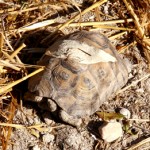 This is one of hundreds of tortoise confiscated from smugglers by the Guardia Civil. These smugglers are taking the reptiles from the Atlas mountains of Morocco and selling them to the European pet trade completely illegally. We have native species in Almería too, the biggest threat to them is fire. As Spain is currently in it’s longest drought in 40 years the danger this summer through fire to these animals is much increased.
This is one of hundreds of tortoise confiscated from smugglers by the Guardia Civil. These smugglers are taking the reptiles from the Atlas mountains of Morocco and selling them to the European pet trade completely illegally. We have native species in Almería too, the biggest threat to them is fire. As Spain is currently in it’s longest drought in 40 years the danger this summer through fire to these animals is much increased.
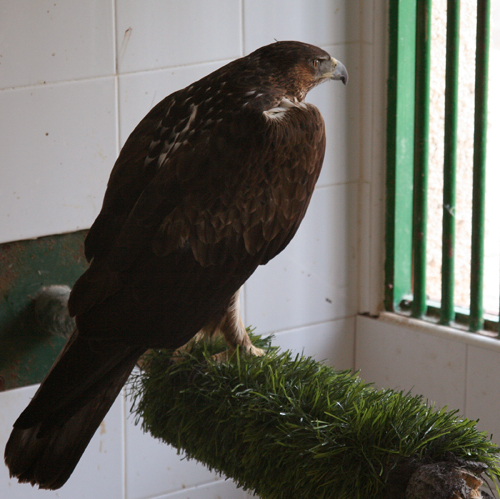
This is a Bonelli’s Eagle, another victim. This bird can live up to 32 years, let’s hope it’s not all behind bars…
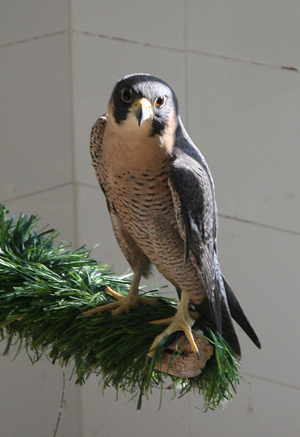 This little Peregrine Falcon was just so beautiful and sadly again another injured bird. However the work undertaken by the Junta de Andalucía’s environmental department is crucial in so many ways. Not only do they recuperate birds to return to nature but they enrol those that can’t return to the wild into breeding programmes. This way these animals have the opportunity to maintain population levels in their natural environment.
This little Peregrine Falcon was just so beautiful and sadly again another injured bird. However the work undertaken by the Junta de Andalucía’s environmental department is crucial in so many ways. Not only do they recuperate birds to return to nature but they enrol those that can’t return to the wild into breeding programmes. This way these animals have the opportunity to maintain population levels in their natural environment.
And what was also stunning is that on this day we got ‘up close and personal’ with a recuperating Golden Eagle. He was was not in the least afraid of us, in fact he danced about making threatening gestures which was fantastic and you could really witness the power of the bird.
And the next photo I am proud of. The good news is that it’s a Bonelli’s Eagle nearly ready to be returned to the wild. It just goes to show what great photographic results you can get even with limited equipment. In many ways I would say the limitation forces you to be more creative within the limits imposed upon you…
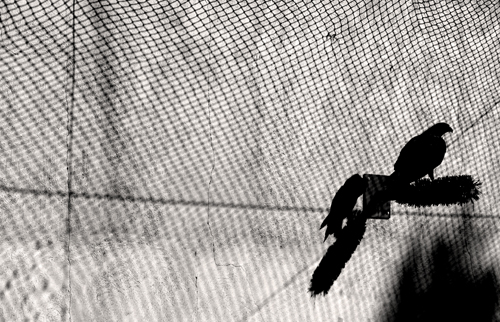
The day went on to more encounters with birds including Griffon Vultures etc. So I would like to say a big thank you to Jesús again and make sure you look him up next time you are in Almería Oz Nature
